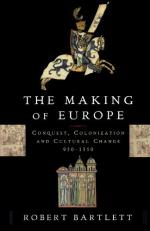|
This section contains 407 words (approx. 2 pages at 300 words per page) |

|
The centerpiece of the Great Exhibition of 1851, the Crystal Palace was a potent symbol of the technological arid social innovations of the Victorian age. Designed in just ten days by the renowned architect Sir Joseph Paxton, the innovative Palace featured interchangeable glass and steel components that greatly reduced construction cost of the huge greenhouse-like building. In response towidespread concern that Paxton's design would not stand up to the weight and motion of huge crowds, a model was constructed and extensively tested, including stress testing under the regimented marching of a battalion of soldiers. The building, which included 4,000 tons of iron and 900,000 square feet of glass, was 1,848 feet long arid 408 wide, enclosed some 772,784 square feet (19 acres), and this space, an area four times that of St. Peter's Cathedral in Rome or six times that of St. Paul's Cathedral in London, provided the...
|
This section contains 407 words (approx. 2 pages at 300 words per page) |

|




